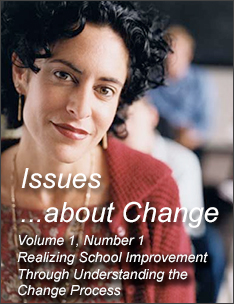In Conclusion
If strong results such as the above are linked to teachers and administrators working in professional learning communities, how might the frequency of such communities in schools be increased? A paradigm shift is needed both by the public and by teachers themselves, about what the role of teacher entails. Many in the public and in the profession believe that the only legitimate use of teachers' time is standing in front of the class, working directly with students. In studies comparing how teachers around the globe spend their time, it is clear that in countries such as Japan, teachers teach fewer classes and use a greater portion of their time to plan, confer with colleagues, work with students individually, visit other classrooms, and engage in other professional development activities (Darling-Hammond, 1994, 1996). Bringing about changes in perspective that will enable the public and the profession to understand and value teachers' professional development will require focused and concerted effort. As Lucianne Carmichael has said, "Teachers are the first learners." Through their participation in a professional learning community, teachers become more effective, and student outcomes increase - a goal upon which we can all agree.
Next Page: References and Credits

